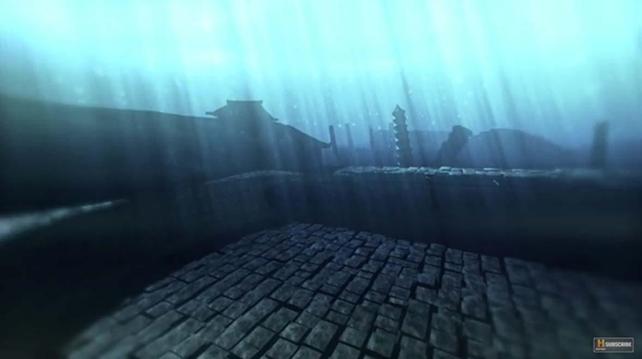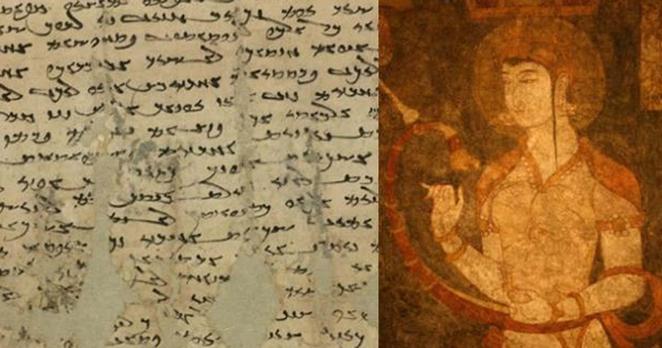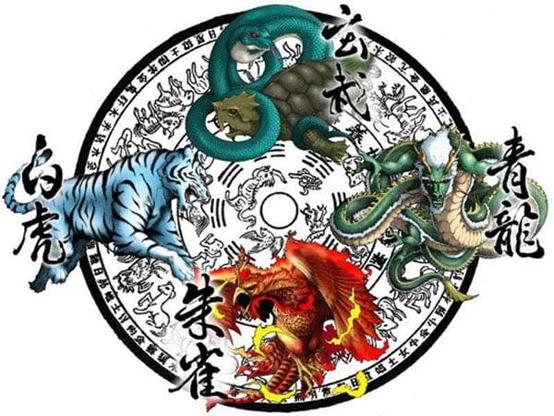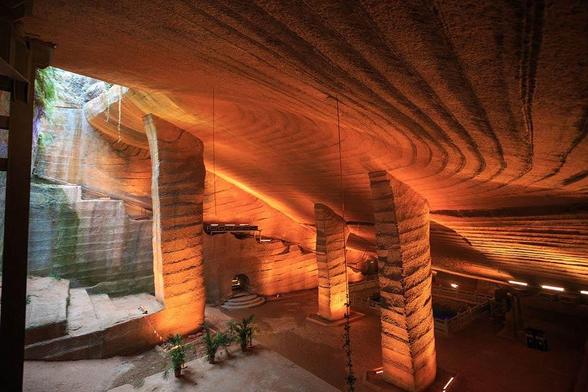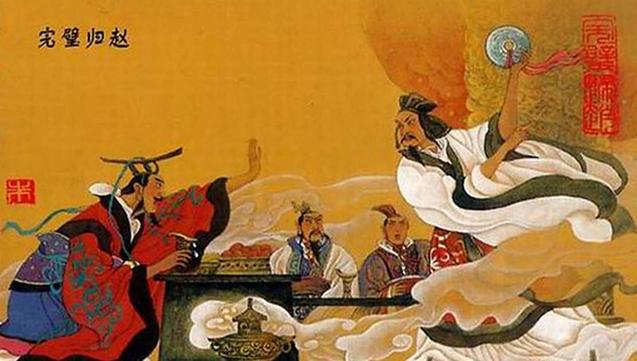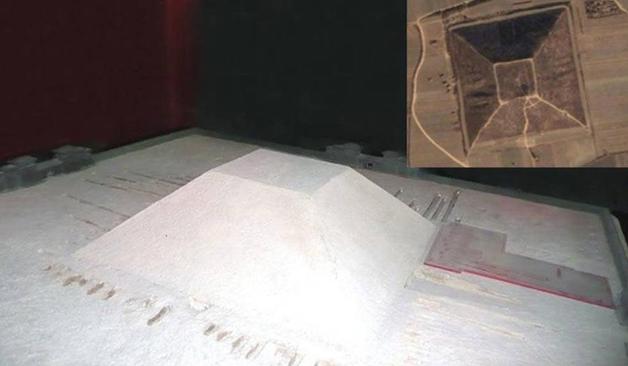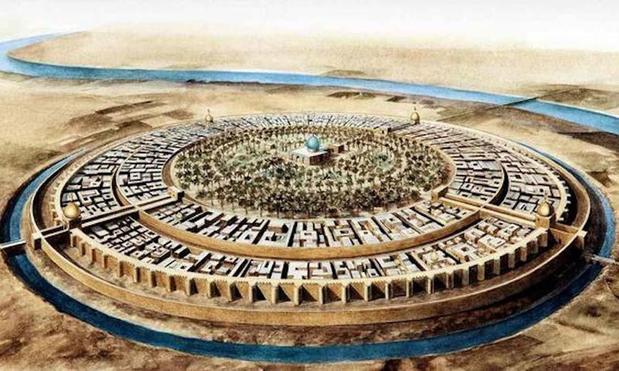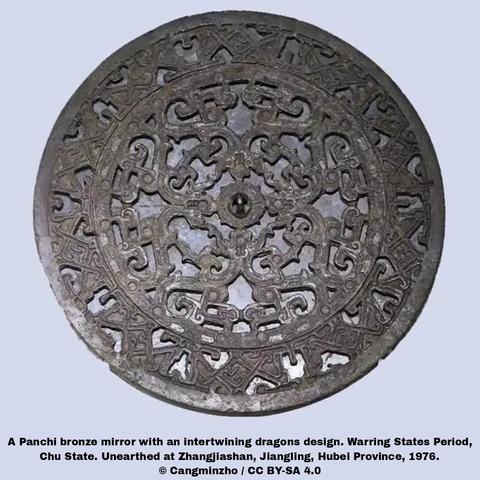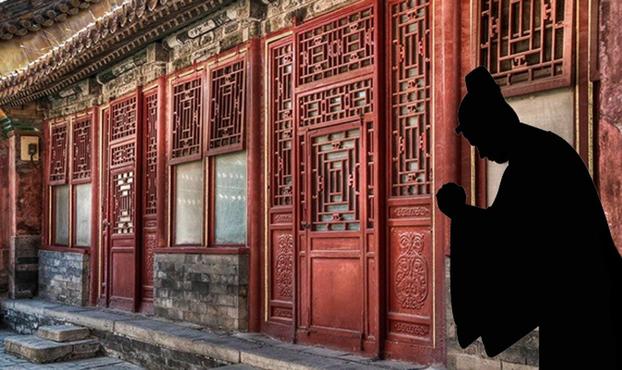💫 AMAZING REVELATION: Enigmatic Carvings on Underwater Ruins in China Mystify Investigators
📈 Trending with 100K+ readers! Share your thoughts below! 💭
https://www.ancient-origins.net/unexplained-phenomena/enigmatic-carvings-underwater-ruins-china-mystify-investigators-009794
#AncientOrigins #History #Archaeology #AncientChina #Chinese #HumanOrigins #Evolution #HistoryFacts #Fascinating #Ancient
#AncientChina
🗿 ARCHAEOLOGICAL BREAKTHROUGH: High Times in Ancient China: 2,700-Year-Old Marijuana Stash Found in Shaman Grave
📈 Trending with 100K+ readers! This will blow your mind! 🤯
https://www.ancient-origins.net/artifacts-other-artifacts/high-times-ancient-china-2700-year-old-marijuana-stash-found-shaman-grave-021722
#AncientOrigins #History #Archaeology #AncientChina #Chinese #Artifacts #Archaeological #HumanOrigins #Evolution #Heritage
⚡ MIND-BLOWING: Heart Wrenching Letters Reveal the Traumatic Life of Miwnay, A Sogdian Woman in China 1,700 Years Ago
📈 Trending with 100K+ readers! Share your thoughts below! 💭
https://www.ancient-origins.net/history-famous-people/miwnay-sogdian-1700
#AncientOrigins #History #Archaeology #AncientChina #Chinese #HumanOrigins #Evolution #MustRead #Fascinating #Ancient
💫 AMAZING REVELATION: The Four Mythological Symbols of China
📈 Trending with 100K+ readers! Prepare to be amazed! 🎊
https://www.ancient-origins.net/myths-legends-asia/four-mythological-symbols-china-001792
#AncientOrigins #History #Archaeology #AncientChina #Chinese #Legends #Mythology #HumanOrigins #Evolution #Culture
🔥 TRENDING NOW: The Chinampas: The Ingenious Aztec "Floating" Farms of Mexico
📈 Trending with 100K+ readers! History just got more interesting! 📚
https://www.ancient-origins.net/ancient-places-americas/chinampas-001537
#AncientOrigins #History #Archaeology #Aztec #Mesoamerica #AncientChina #Chinese #HumanOrigins #Evolution #Civilization
⚡ MIND-BLOWING: The Lost Legion of Carrhae: Did a Roman Legion End Up in China?
📈 Trending with 100K+ readers! You won't believe what they found! 😱
https://www.ancient-origins.net/unexplained-phenomena/lost-legion-carrhae-0011019
#AncientOrigins #History #Archaeology #RomanEmpire #AncientRome #AncientChina #Chinese #HumanOrigins #Evolution #Civilization
Twelve Ornaments
This is a group of ancient Chinese symbols & designs that are considered highly favorable. They were used in the decoration of textile fabrics in ancient China. These signified authority & power. They were embroidered on the vestments of state.
According to the Book of Documents, the 12 Ornaments were referred by Emperor Shun, 1 of the legendary 3 Sovereigns & 5 Emperors, as being ancient in his time. Oral traditions say that he lived sometime between 2294 & 2184 BC.
According to the book, the emperor wished for the symbols to be used on official robes of the state. Only the emperor had the right to wear the complete set of 12 emblems painted, or embroidered, on his robes of ceremony.
The 12 Ornaments were used in different amounts. It could indicate different social ranks. For example, in 59 AD during the Eastern Han Dynasty, it’s identified that the 12 Ornaments concern the sun, moon, & star had been used for the emperors while 9 Ornaments concerned mountains & dragons should be used by 3 councilors, Duke’s, & princes. 9 ministers & lower ranking officials had to use 7 Ornaments concerning pheasants.
The 12 Ornaments featured in the 12 Symbols of the national emblem of China, which was the state emblem from 1913 to 1928. The 12 symbols were used as insignia for reigning emperors, empresses, & the immediate members of the imperial family.
The portrait of the Wanli Emperor (1563-1620) in his mianfu featuring all 12 Ornaments. Mianfu is a kind of Chinese clothing in the traditional clothing of the Han people of China.
On the Upper Robe: The sun with the 3-legged crow; the moon with the moon rabbit in it, who’s constantly pounding the elixir of life; the 3 stars, which could also be the Fu Lu Shou stars, which symbolize happiness, prosperity, & longevity; the sacred mountains, which symbolizes stability & tranquility; the dragon, symbol of adaptability & strength; & the pheasant, which can be considered the Phoenix (fenguang), symbol of peace & refinement.
The dragon & phoenix represent the natural world. In yin & yang terminology, a dragon is male (yang) & the phoenix is female (yin). So, the emperor is often identified as the dragon & the empress was the Phoenix. This was also reflected in the robes they wore.
On the Lower Robe: There are 2 cups, which are sacrificial utensils. Sometimes they feature patterns containing each a tiger & a monkey. They symbolize faithfulness & respect; a spray of pondweed or algae, a symbol of brightness & purity; fire, which symbolizes nourishment & the country’s agriculture, also wealth; an axe, the symbol of courage & resolution, also executive justice; & the figure underneath the axe represents animals with their backsides together. This symbolizes the capability to make a a clear distinction between right & wrong.
In Japan, Emperor Monmu introduced the 12 Ornaments via the Taiho Code, which was enacted in 703. Gojong of Korea used the 12 Ornaments on his enthronement (myeonbok) costume when he proclaimed himself Emperor of Korea in 1897. This followed the dress system of ancient China.
In the enthronement (myeonbok) costume of Korean emperors could only use 9 out of the 12 Ornaments. Only the Chinese emperors could wear all 12 Ornaments. It was only after Gojong proclaimed the Korean Empire, equal to China, that he was allowed to wear all 12.
The myeonbok, featuring the 12 Ornaments, continue to be used in the Korean imperial household’s Jongmyo Daejae ancestor-worship ceremony.
Nowadays, these Chinese symbols have lost most of their significance & are mostly used to decorate clothing.
One-Time Monthly YearlyMake a one-time donation
Make a monthly donation
Make a yearly donation
Choose an amount
$1.00 $5.00 $10.00 $1.00 $5.00 $10.00 $5.00 $10.00 $15.00Or enter a custom amount
$Your contribution is appreciated.
Your contribution is appreciated.
Your contribution is appreciated.
DonateDonate monthlyDonate yearly
#1563 #1620 #1897 #1913 #1928 #2Cups #2184BC #2294BC #3Sovereigns #3LeggedCrow #5Emperors #59AD #703 #AncestorWorship #AncientChina #Axe #BookOfDocuments #China #Chinese #Dragon #EasternHanDynasty #ElixirOfLife #EmperorMonmu #EmperorOfKorea #EmperorShun #EnthronementCostume #Fenghuang #FuLuShouStars #GojongOfKorea #HanPeopleOfChina #Japan #JongmyoDaejae #KoreanEmpire #LowerRobe #Mianfu #MoonRabbit #Myeonbok #Pheasant #Phoenix #Pondweed #TaihoCode #Tiger #TwelveOrnaments #UpperRobe #WanliEmperor
💫 AMAZING REVELATION: Ten Enduring Mysteries of China's Longyou Caves
📈 Trending with 100K+ readers! You won't believe what they found! 😱
https://www.ancient-origins.net/ancient-places-asia/longyou-caves-001248
#AncientOrigins #History #Archaeology #AncientChina #Chinese #HumanOrigins #Evolution #Past #Ancient #DidYouKnow
??? ANCIENT MYSTERY: The Legend of the Imperial Jade Seal of China, An Heirloom Lost in Time
?? Trending with 100K+ readers! History just got more interesting! ??
https://www.ancient-origins.net/artifacts-other-artifacts/legend-imperial-jade-seal-china-heirloom-lost-time-007220
#AncientOrigins #History #Archaeology #AncientChina #Chinese #Artifacts #Archaeological #Legends #Mythology #HumanOrigins
Qin and Zhao forces clash during the unification of China, 260 BCE
𝗥𝗶𝘁𝘂𝗮𝗹 𝗖𝗲𝗿𝗲𝗺𝗼𝗻𝗶𝗲𝘀 𝗛𝗲𝗹𝗽𝗲𝗱 𝗣𝗮𝘃𝗲 𝘁𝗵𝗲 𝗪𝗮𝘆 𝗳𝗼𝗿 𝗖𝗵𝗶𝗻𝗲𝘀𝗲 𝗨𝗻𝗶𝗳𝗶𝗰𝗮𝘁𝗶𝗼𝗻
Excavations in Shandong, China, reveal 3,000-year-old ritual platforms, showing how public ceremonies were used to shape cultural identity before China’s ancient unification.
#ancientchina #AncientHistory #AncientOrigins
https://www.ancient-origins.net/news-history-archaeology/ritual-platforms-china-00102194
𝗙𝗶𝗿𝘀𝘁 𝗛𝘂𝗺𝗮𝗻 𝗕𝗼𝗻𝗲 𝗠𝗼𝗱𝗶𝗳𝗶𝗰𝗮𝘁𝗶𝗼𝗻 𝗙𝗼𝘂𝗻𝗱 𝗶𝗻 𝗡𝗲𝗼𝗹𝗶𝘁𝗵𝗶𝗰 𝗖𝗵𝗶𝗻𝗮
Possibly the earliest ever human bone modification has been discovered in China, challenging our understanding of ancient Chinese burial practices. What drove this unprecedented cultural shift?
#bodymodification #ancientchina #neolithic #AncientHistory #AncientOrigins
https://www.ancient-origins.net/news-history-archaeology/human-bone-modification-liangzhu-00102181
?? TRENDING NOW: In Search of the Fabled 1,000-ft White Pyramid of Xian in China
?? Trending with 100K+ readers! This changes everything we knew! ??
https://www.ancient-origins.net/unexplained-phenomena/white-pyramid-xian-002470
#AncientOrigins #History #Archaeology #AncientChina #Chinese #HumanOrigins #Evolution #Ancient #Amazing #Civilization
? MUST READ: The Walls of Benin: Four Times Longer Than The Great Wall of China!
?? Trending with 100K+ readers! This will blow your mind! ??
https://www.ancient-origins.net/ancient-places-africa/walls-benin-0016222
#AncientOrigins #History #Archaeology #AncientChina #Chinese #HumanOrigins #Evolution #Amazing #Past #HistoryFacts
?? VIRAL STORY: Translation of 5,500-Year-Old Babel Text from China Reveals Oldest Known Map of Inner Solar System
?? Trending with 100K+ readers! You won't believe what they found! ??
https://www.ancient-origins.net/human-origins-science/babel-text-0011290
#AncientOrigins #History #Archaeology #AncientChina #Chinese #HumanOrigins #Evolution #DidYouKnow #HistoryFacts #Amazing
Ancient bronze mirrors reveal how politics and industry shaped early Han Dynasty China
A recent study is rewriting history regarding how politics and industry interacted in early imperial China. Researchers have tracked the evolution of bronze mirror making back to a time of economic recovery and state-backed reform during the reigns of Emperors Wen (180–157 BCE) and Jing (157–141 BCE) of the Western Han dynasty
More info: https://archaeologymag.com/2025/09/ancient-panchi-bronze-mirrors-china/
Mandate of Heaven
This is called tianming in Chinese, literally Heaven’s command.
This is a philosophical concept & political justification used in ancient China & Imperial China to legitimize the rule of kings/emperors of China.
According to this idea, Heaven/Shangdi/Tian gives its mandate on a virtuous ruler or that a ruler’s authority comes from a divine ruler. This ruler is called the Son of Heaven, who’s the supreme universal monarch will rule over the earth (or Tianxia, “all under Heaven”). This mandate isn’t permanent right but it’s conditional upon the ruler’s virtue, morality, & ability to govern justly.
A ruler who’s benevolent & looks after the welfare of their people maintains the Mandate. But 1 who becomes tyrannical, unjust, or neglects his/their can lose the Mandate. If a ruler is overthrown, this was interpreted as an indication that the ruler & his/their dynasty were unworthy & had lost the Mandate.
It was also a common belief that natural disasters such as famine & flood were divine retributions bearing signs of Heaven’s displeasure with the ruler. So there would be often revolts following major disasters as the people saw the calamities as signs that the Mandate had been withdrawn.
The Mandate of Heaven is a concept with a few central tenets:
- Divine Approval: Heaven grants the right to rule to a single person, the “Son of Heaven,” who’s expected to act as a mortal leader for the people. The Mandate doesn’t require a legitimate ruler to be of noble birth. Chinese dynasties such as the Hun & Ming were founded by men of common origins. They were seen as having gained the Mandate. Retaining the Mandate is contingent on the just & able performance of the rulers & their heirs.
- The Right to Rebel: Perhaps the most revolutionary aspect of this idea is that it justifies rebellion against an unjust ruler. If a ruler loses the Mandate due to their cruelty or incompetence, it’s believed that Heaven has withdrawn favor. The Mandate was often invoked by philosophers & scholars in China as a way to curtail the abuse of power by the ruler. In such a case, the people have a moral right to overthrow the emperor/ruler. The successful leader of the rebellion is seen as having earned the new Mandate.
- Virtue as a Prerequisite: A ruler’s legitimacy is tied to his/their personal conduct & the quality of their governance. This includes being wise, fair, & caring for the well-being of their subjects.
- Cyclical Nature: The Mandate helps explain the cyclical pattern of dynastic change in Chinese history. A new dynasty is founded by a “virtuous” leader who overthrows a “corrupt” one. The new dynasty flourishes for a time. But over generations, its rulers may become corrupt or weak, leading to social decay & loss of the Mandate thus paving the way for a new dynasty to come power.
The concept of the Mandate of Heaven originated during the Zhou dynasty, which was used to overthrow the previous Shang dynasty, the Zhou rulers claimed that the Shang had become corrupt & that Heaven had given the Mandate to them instead.
It’s been used throughout the history of China to legitimize the successful overthrowing & installation of new dynasties, including by non-Han dynasties such as the Qing dynasty. The Mandate has been called the Zhou dynasty’s most important contribution to Chinese political thought. But it coexisted & interfaced with other theories of sovereign legitimacy. This includes abdication to the worthy.
The Mandate of Heaven provided a powerful moral & religious framework for political change & stability in Chinese society for over 2 millennia. The Mandate wasn’t a formal legal document. But a moral & philosophical one.
Because of China’s influence in medieval times, the concept of the Mandate of Heaven spread to other East Asian countries as a justification for rule by divine political legitimacy. In Korea, the kingdom of Goguryeo (one of the Three Kingdoms of Korea) adopted China’s concept of tianxia.
However, in Goguryeo, it was changed to be based on divine ancestry. In the Goguryeo story, Jumong was born to Hye Moss, the son of the Emperor, & Yu Hwa, the daughter of Habaek, the god of water.
When Yuhwa was pregnant, she entrusted her body to the king of Buyeo & laid an egg. The person who came out of the egg was Jumong. When Jumong grew up & performed arious strange tricks, the sons of King Buyeo became jealous.
Jumong eventually fled from Buyeo & built a country called Goguryeo. This is a case in which Goguryeo claimed the legitimacy of expelling Buyeo under the command of Heaven by setting him as the son of God.
Recently, China historians have noted that the ruler’s Mandate of Heaven had a more local equivalent. This applied to county magistrates & prefects in Ming times. They were called the “Minor Mandate.”
One-Time Monthly YearlyMake a one-time donation
Make a monthly donation
Make a yearly donation
Choose an amount
$1.00 $5.00 $10.00 $1.00 $5.00 $10.00 $5.00 $10.00 $15.00Or enter a custom amount
$Your contribution is appreciated.
Your contribution is appreciated.
Your contribution is appreciated.
DonateDonate monthlyDonate yearly
#AncientChina #Buyeo #China #Chinese #DivineAncestry #DivineApproval #Dynasties #EastAsia #Emperors #Goguryeo #Habaek #HanDynasty #Heaven #HunDynasty #HyeMoss #ImperialChina #Jumong #KingBuyeo #Kings #Korea #MandateOfHeaven #Medieval #Ming #MingDynasty #MinorMandate #QingDynasty #RightToRebel #ShangDynasty #Shangdi #SonOfHeaven #ThreeKingdomsOfKorea #Tian #Tianming #Tianxia #YuHwa #Yuhwa #ZhouDynasty
𝗤𝗶𝗻 𝗗𝘆𝗻𝗮𝘀𝘁𝘆 𝗖𝗮𝗿𝘃𝗶𝗻𝗴 𝗣𝗿𝗼𝘃𝗲𝘀 𝗜𝗺𝗺𝗼𝗿𝘁𝗮𝗹𝗶𝘁𝘆 𝗤𝘂𝗲𝘀𝘁
Scientists have authenticated a 2,200-year-old rock carving in Tibet that proves China's first emperor really did send expeditions searching for the elixir of immortality.
#ancientchina #Emperor #AncientHistory #AncientOrigins
https://www.ancient-origins.net/news-history-archaeology/qin-dynasty-carving-0022464
💫 AMAZING REVELATION: The Fascinating Life of a Chinese Eunuch in the Forbidden City
📈 Trending with 100K+ readers! You won't believe what they found! 😱
https://www.ancient-origins.net/history/fascinating-life-chinese-eunuch-forbidden-city-china-002524
#AncientOrigins #History #Archaeology #AncientChina #Chinese #HumanOrigins #Evolution #Civilization #Fascinating #Past
Archaeologists in Inner Mongolia have discovered a rare 1,500-year-old imperial stone inscription that may commemorate Emperor Daowu's 399 AD military campaign against nomadic tribes, offering unprecedented insights into Northern Wei frontier governance.
#northernwei #ancientchina #ancientmongolia #ancienthistory
https://www.ancient-origins.net/news-history-archaeology/northern-wei-stone-inscription-0022363
